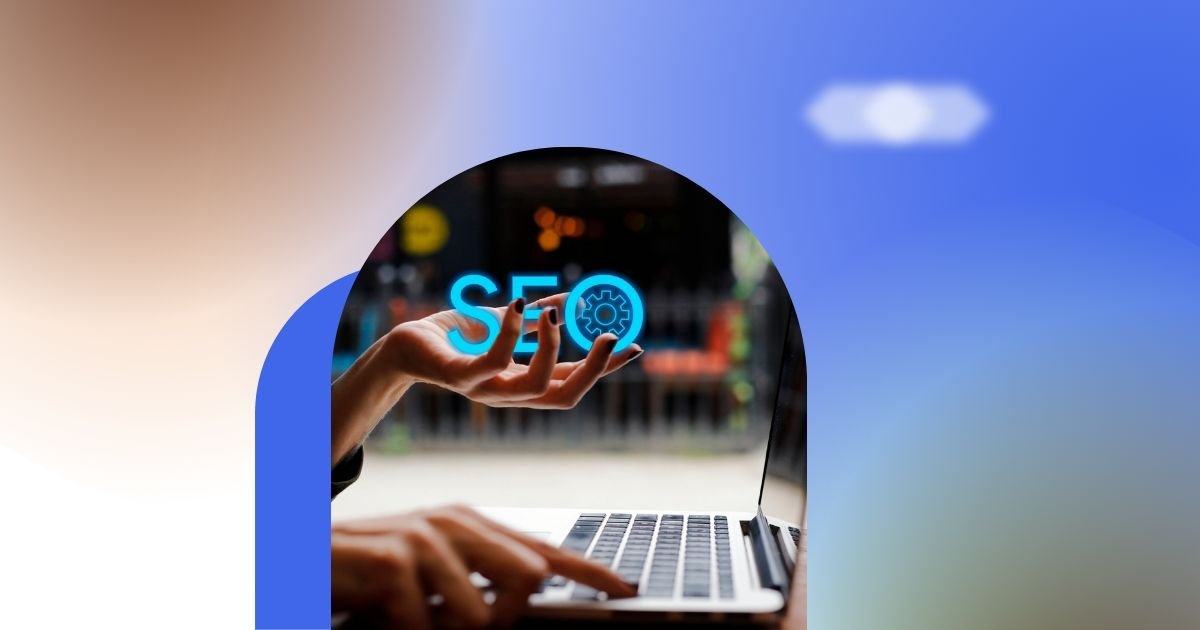The COVID-19 pandemic triggered a seismic shift in the business landscape, emphasizing the crucial need for future proofing. Approximately 630 companies declared bankruptcy during the pandemic, 125 of which were consumer discretionary stores that relied on traditional retail operations. This crisis underscored that future proofing is not just a prudent strategy but a fundamental survival imperative for businesses of all sizes.
Why Future Proofing is Tricky for Businesses
Future proofing is defined as the process of anticipating and preparing for potential future changes and challenges to minimize impact and secure long-term success. This entails examining upcoming patterns and possible hazards and formulating plans and remedies to alleviate their impact.
Future proofing doesn’t only apply to businesses; in fact, numerous personal activities such as securing insurance, venturing into real estate, and investing are ways to future proof your finances.
So, if you’re doing it in your personal life, why is future proofing trickier for businesses?

You’re Future Proofing Numerous Operational Areas
Future-proofing is inherently more challenging for businesses than individuals due to organizational operations’ complexity and multifaceted nature. Businesses must navigate numerous operational areas such as technology, supply chain management, workforce planning, and market dynamics, making the task intricate and multifaceted.
According to a survey conducted by PwC, 77% of C-level executives expressed concerns about the availability of key skills in the workforce, highlighting the intricate challenge of future-proofing the human capital aspect of businesses. In contrast, individuals are primarily responsible for their own skill development.
Technological advancements further complicate future-proofing for businesses. A study by Deloitte found that 72% of executives believe that AI and robotics will significantly impact their business in the next three years.
These are just some of the numerous operational considerations companies need to explore to ensure their operations are ready for any future market shifts.
We’re Coming from a Different Paradigm
Future proofing for businesses has become challenging due to the shift in paradigms brought about by the COVID-19 pandemic. Before the pandemic, the prevailing mindset among startups and business owners was to “move fast and break things.” This logic encouraged rapid innovation and risk-taking, driven by the belief that agility and speed were paramount in gaining a competitive advantage. However, the pandemic exposed the vulnerabilities inherent in this approach.
Statistics and research indicate a significant impact on businesses. According to a McKinsey report, 92% of executives considered their business models at risk during the pandemic. The unprecedented disruptions highlighted the need for resilience and adaptability, prompting a reassessment of the “move fast and break things” philosophy. Businesses realized the importance of anticipating and preparing for unforeseen challenges.
The pandemic accelerated digital transformation, with a 2021 Gartner survey reporting that 82% of respondents had fast-tracked their digital initiatives. This shift emphasized the necessity of a more measured and strategic approach to innovation. Future-proofing now requires a balance between agility and stability, incorporating lessons learned from the pandemic. Businesses are focusing on building robust contingency plans, investing in digital infrastructure, and fostering a culture of adaptability to navigate future uncertainties.
Multiple Upheavals are on the Horizon
Future-proofing for businesses is complex due to the multitude of potential upheavals on the horizon.
Geopolitical volatility is anticipated to impact business leaders significantly in the next decade. The Wall Street Journal even said that the international geopolitical landscape is no longer just a mere cocktail party, and businesses should have risk reduction plans in place for any economic turmoil that may affect their businesses.
Additionally, technological disruptions, with 80% of executives acknowledging the risk to their current business models, contribute to the challenge. The unpredictability of global health crises, exemplified by the COVID-19 pandemic, further complicates future-proofing efforts.
These upheavals underscore the need for businesses to navigate uncertainties ranging from geopolitical shifts to rapid technological advancements and unforeseen global events, requiring strategic foresight and adaptability to effectively prepare for the future.
So, Where Do You Begin When Future Proofing a Business?
Understanding the nuances of future proofing is crucial before diving into strategies. The first step is acknowledging the significance of knowing what aspects of a business are important for future proof.

Define Business-Critical Roles
Research underscores the importance of identifying and securing business-critical roles. While each businesses have their own critical business areas, here are the essential operational areas per industry:
Retail: Logistics and Supply Chain Management
Retail heavily relies on efficient logistics and supply chain management to ensure products are sourced, stored, and delivered in a timely and cost-effective manner. This includes inventory management, transportation, and distribution networks.
Technology: Research and Development (R&D)
In the technology industry, continuous innovation through research and development is crucial. Companies invest heavily in R&D to stay ahead of the competition, develop new products, and improve existing ones.
Finance: Risk Management and Compliance
Managing risks and ensuring compliance with regulatory requirements are critical in the financial sector. This involves developing robust risk management strategies, adhering to financial regulations, and staying updated on industry compliance standards.
Healthcare: Research and Patient Care
Research and development are pivotal in discovering new treatments, medications, and medical technologies. Patient care is equally critical, encompassing medical services, diagnostics, and overall healthcare delivery.
Manufacturing: Production and Quality Control
For manufacturing industries, the production process is central. Efficient production, quality control, and adherence to industry standards are critical to manufacturing high-quality products at scale.
Automotive: Design and Innovation
In the automotive industry, design and innovation play a key role. Companies invest in designing cutting-edge vehicles, incorporating new technologies, and improving fuel efficiency and safety features.
Telecommunications: Network Infrastructure
For telecommunications, the development and maintenance of robust network infrastructure are paramount. This includes deploying and maintaining telecommunications networks, such as mobile and broadband services.
Hospitality: Customer Service and Experience
In the hospitality industry, customer service and experience are critical for success. Providing excellent service, managing guest experiences, and ensuring customer satisfaction contribute to the industry’s competitiveness.
Energy: Resource Exploration and Sustainability
In the energy sector, resource exploration and sustainability are crucial areas. Companies engage in exploring and extracting energy resources while increasingly focusing on sustainable practices and renewable energy sources.
Aside from these critical areas, your technological infrastructure should also be prioritized. According to a recent study, 82% of executives believe their organizations lack the skills necessary for digital transformation. This emphasizes the imperative of targeted skill development and strategic role definition to navigate the challenges of an increasingly digital future.
In addition, the World Economic Forum’s Future of Jobs report highlights that by 2025, over half of all employees will need significant upskilling or reskilling, emphasizing the need for a tailored approach to future-proofing through skill identification. By acknowledging and addressing these skill gaps, businesses can not only future-proof critical roles but also foster a workforce ready for the evolving demands of the digital landscape.

Get Clear on Your Brand
Research from Nielsen emphasizes the impact of a strong brand on consumer behavior, stating that 59% of consumers prefer to buy new products from brands familiar to them. Small businesses, therefore, benefit from strategically shaping their brand identity to foster familiarity and trust. Furthermore, a study by Interbrand reveals that businesses with strong brands outperform the market by a whopping 36%, highlighting the long-term advantages of a clear and compelling brand strategy in ensuring competitiveness.
Companies must strategically invest in marketing to communicate and amplify their brand message effectively. Small businesses, in particular, stand to benefit significantly from allocating resources to marketing efforts. Establishing a robust brand identity is only the first step; ensuring that this identity reaches and resonates with the target audience requires a well-crafted marketing strategy. By investing in targeted marketing campaigns across various channels, businesses can enhance brand visibility, engage potential customers, and foster a sense of familiarity and trust.
These data highlight the critical role that brand clarity plays not only in immediate consumer decisions but also in the sustained success and market resilience of businesses over time.
Take a Customer-Centric Approach to Growth
The imperative of taking a customer-centric approach to growth is underscored by compelling research. According to a PwC report, a staggering 73% of consumers identify customer experience as a decisive factor in their purchasing decisions. This statistic emphasizes that in today’s competitive landscape, businesses cannot afford to overlook the significance of crafting exceptional and satisfying customer journeys.
Furthermore, a Salesforce survey amplifies the importance of aligning technological investments with customer-centric strategies. The survey reveals that 76% of customers expect companies to leverage new technologies to create enhanced and personalized experiences. This expectation emphasizes the evolving nature of consumer preferences and the increasing role of technology in shaping those preferences. Therefore, businesses that strategically invest in customer-centric technologies not only meet current consumer expectations but also position themselves as innovators in the eyes of their clientele.
This alignment with customer-centric principles serves as a pillar for building resilience against market uncertainties. By prioritizing customer experiences, businesses establish a solid foundation of customer loyalty, satisfaction, and advocacy. Moreover, by leveraging technology to enhance customer interactions, businesses not only adapt to current expectations but also future-proof themselves, ensuring they remain agile and responsive in the face of ever-changing consumer behaviors and market dynamics.
Create a Strong Partner Ecosystem
Engaging in strategic partnerships and alliances extends a business’s reach and capabilities. As market dynamics shift, partnerships offer agility, allowing companies to pool resources, share insights, and collectively navigate challenges. According to recent studies, companies with effective partnerships are 1.5x more likely to report revenue growth than those without such collaborations.
Partner ecosystems contribute to diversifying skills, technologies, and market access, reducing reliance on a single approach. This diversity fosters innovation and acts as a buffer against unforeseen disruptions. As businesses evolve, so do their partner ecosystems, reinforcing their capacity to anticipate, adapt, and capitalize on emerging opportunities. In essence, cultivating a robust network of partnerships becomes a strategic pillar in the future-proofing framework, ensuring businesses are not isolated entities but interconnected participants in a dynamic and collaborative business ecosystem.
Don’t Overlook Internal Future-Proofing
Research by Deloitte highlights the talent challenge, revealing that 79% of global executives rate the shortage of critical skills as their top business challenge. Internal future-proofing, therefore, becomes imperative, and the Harvard Business Review emphasizes the link between talent management and organizational performance. Addressing internal skill gaps ensures that businesses have the necessary expertise to execute strategies effectively, fostering adaptability and long-term success.
Proactive talent acquisition and development not only future-proof businesses internally but also contribute to a more agile, competitive, and resilient organizational culture.
Embracing Alternative Working Setups
In an era characterized by rapid technological advancements and shifting work paradigms, alternative working setups such as remote working and freelancing have emerged as pivotal strategies for future-proofing businesses. Remote working, in particular, offers the flexibility that enables companies to tap into a global talent pool. Research indicates that remote work can increase employee productivity and satisfaction, with a Buffer survey reporting that 99% of respondents would like to work remotely at least some of the time. This flexibility not only facilitates access to diverse skill sets but also enhances the resilience of businesses by reducing dependency on specific geographic locations.
Freelancing, on the other hand, provides businesses with agility in workforce management. Leveraging freelancers allows companies to scale their workforce based on project needs, tapping into specialized expertise without the long-term commitment of traditional employment. According to a report by Upwork, 59 million Americans freelanced in 2020, contributing $1.2 trillion to the economy. This model not only promotes cost-effectiveness but also positions businesses to quickly adapt to changing market demands. Embracing alternative working setups not only aligns with the evolving preferences of the modern workforce but also future-proofs businesses by fostering adaptability, resilience, and access to a diverse pool of talent.
Future Proof Your Business by Establishing Value
As we navigate the complex terrain of business uncertainties, future proofing emerges as the guiding principle that empowers businesses not only to survive but to thrive in the face of change. By strategically addressing critical aspects such as roles, branding, customer-centric growth, and internal talent, businesses can lay a robust foundation for future success. In a world where adaptation is the key to longevity, future-proofing is the compass that points toward resilience and growth.
Check out the other articles in Wing’s blog for more tips and insights on productivity and business growth.
Aya is Wing Assistant’s blog manager. When she’s not wrangling content briefs, editing article drafts and handling on-page SEO, she is crafting messages for Wing’s other communication materials. Aya writes about SaaS startups, marketing for startups, search engine optimization, and pop culture.






